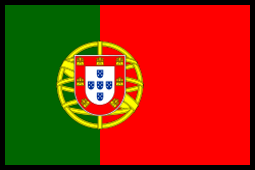

Let’s delve into the history of Valentine’s Day to understand how it evolved into the cherished celebration we know today.
Ancient Roots: The Festival of Lupercalia
The history of Valentine’s Day can be traced back to ancient Rome and the pagan festival of Lupercalia, celebrated in mid-February. Lupercalia was a fertility festival dedicated to Faunus, the Roman god of agriculture, as well as Romulus and Remus, the legendary founders of Rome. During this festival, priests called Luperci would sacrifice goats and dogs, symbols of fertility and purification. They would then use the hides to whip women, believing this ritual would ensure fertility and a prosperous year.
Lupercalia also included a matchmaking tradition where young men and women would be paired together through a lottery system. While this practice bears little resemblance to modern Valentine’s Day, it highlights early February’s association with love and fertility.
The Christian Connection: Saint Valentine
Valentine’s Day as we know it began to take shape with the rise of Christianity. According to popular belief, the holiday’s name honors Saint Valentine, though there is some mystery surrounding which Valentine is being commemorated. Several Christian martyrs named Valentine are recognized in history, but two are most commonly linked to the holiday:
- Valentine of Rome: A priest who defied Emperor Claudius II’s decree prohibiting marriages for young men, believing that single men made better soldiers. Valentine secretly performed weddings for young couples and was eventually arrested and executed around 270 AD.
- Valentine of Terni: A bishop who was also martyred for his Christian faith and his role in uniting couples in matrimony.
Legend has it that before his execution, Saint Valentine wrote a letter to the jailer’s daughter, signing it “From Your Valentine,” which inspired the romantic connotations of the holiday.
In 496 AD, Pope Gelasius I declared February 14 as Saint Valentine’s Day, replacing the pagan Lupercalia with a Christian celebration. However, it wasn’t until the Middle Ages that the day became associated with romantic love.
The Medieval Era: Courtly Love and Poetic Beginnings
The connection between Valentine’s Day and romance flourished during the Middle Ages. In 1382, English poet Geoffrey Chaucer composed Parliament of Fowls, which included one of the earliest references to Valentine’s Day as a celebration of romantic love. Chaucer wrote:
“For this was on Saint Valentine’s Day, when every bird comes there to choose his mate.”
This poetic connection solidified the idea of February 14 as a day for lovers.
During this period, the concept of “courtly love” emerged, emphasizing chivalry and devotion. Lovers began exchanging handwritten notes and tokens of affection. The tradition of sending Valentine’s cards can be traced back to these early expressions of love.
The Renaissance and Beyond: Valentine’s Day in Popular Culture
By the Renaissance, Valentine’s Day had become a widely celebrated occasion across Europe. Handwritten love letters gained popularity, and symbols like Cupid, hearts, and flowers became associated with the holiday. Cupid, the Roman god of love, was often depicted with a bow and arrow, symbolizing the power to make people fall in love.
In the 18th century, Valentine’s Day saw the emergence of printed cards, particularly in England. Known as “Valentines,” these cards featured romantic verses and intricate designs. The advent of the Industrial Revolution in the 19th century made mass production possible, leading to the commercialization of the holiday.
Valentine’s Day Today: A Global Celebration of Love
Today, Valentine’s Day is celebrated around the world, with unique traditions in different cultures. In the United States and Europe, the day is marked by the exchange of cards, flowers, and gifts. Japan celebrates with women giving chocolates to men, while men reciprocate a month later on White Day. In Finland, the day focuses on friendship rather than romantic love, known as “Friend’s Day.”
Modern Valentine’s Day is also a time for giving thoughtful gifts to loved ones. If you’re looking for a meaningful way to express your feelings, explore our curated selection of Valentine’s Day gifts at Walwater Gifts. With our luxurious gift baskets, our offerings are designed to make your loved one’s day truly special.
Valentine’s Day and Its Enduring Legacy
The evolution of Valentine’s Day reflects humanity’s enduring desire to celebrate love in all its forms. From ancient fertility rituals to modern expressions of romance, the holiday continues to bring people closer together. Whether you’re honoring a partner, a friend, or a family member, Valentine’s Day is a reminder of the importance of love and connection.
As February 14 approaches, embrace the opportunity to show your appreciation for those who matter most. Let your gestures of love and kindness make this Valentine’s Day unforgettable.

Walwater Gifts
Our Uniquely Designed Gifts story began in 2008 when the business started with Baby Gifts only, especially Sweet Chocolate Bouquets. After a few years, we expanded the business presence by opening a second operation center in Europe. Walwater Gifts offers a beautiful and impressive collection of Gifts and Specialty Items.
About Us
Walwater Gifts uses the highest quality products, every order is treated with respect and attention to detail to ensure a perfect gift. We continuously strive to improve our products and services and create every gift with the same pride and enthusiasm as if it were our very own.
Recent Posts
Follow Us
Sign up for our Newsletter
Sign Up for exclusive offers
We proudly accept







































